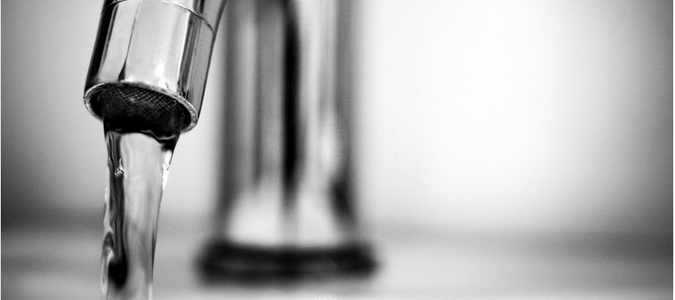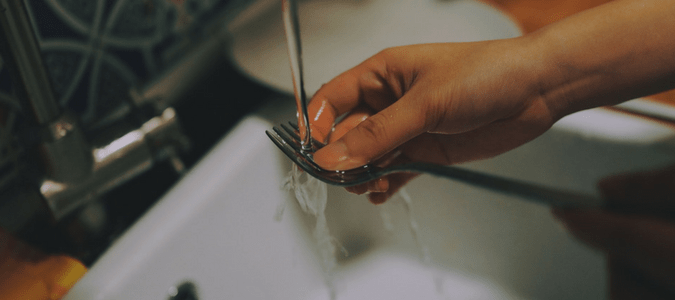
Many homes built after World War II, but prior to the 1960s, used galvanized steel pipes for indoor plumbing. Some galvanized plumbing was still being installed as late as the 1980s. Although there are benefits to using galvanized steel, your plumbing problems may be linked to these types of pipes. Learn more about why you may need to upgrade your home’s plumbing, how long galvanized pipes last, whether these pipes contain lead and how to determine which kind of plumbing you have.
What is Galvanized Plumbing?
Lead was once the most common metal used to make pipes to transport water. By 1900, over 70 percent of larger cities used lead-based pipes in municipal drinking water systems. After increased pressure to curb lead poisoning, builders began looking for an alternative to lead pipes. By the 1960s, galvanized steel had replaced lead as the building block of choice for plumbing.
Steel pipes are galvanized when they are dipped into molten zinc. This zinc coating helps prevent rust. However, after decades of use, corrosion and rust build up on the inside of these pipes, which can cause problems. If you are unsure about what type, or types, of pipe you have in your home, there are a few ways you can tell. Find the area where pipes enter your home and carefully scratch the pipe with a nickel. If the surface of the pipe is the color of a penny, then the pipe is probably made from copper. Galvanized steel pipes, on the other hand, are a steel-gray color. Plastic pipes are usually black and clamps should be visible.
Benefits of Galvanized Pipes
When galvanized pipes were first used, they were preferred because they were less costly than copper. These types of pipes are still often chosen in large construction projects and for outdoor plumbing. Galvanized pipes remain less expensive than copper and are more durable than plastic. Another benefit of galvanized pipes is that they have a wider diameter to allow more water through when compared to copper.
Drawbacks of Using Galvanized Plumbing
The most obvious disadvantage of galvanized plumbing is the corrosion that builds up along the interior of the pipes over time. Because these types of pipes are made of steel, they’re also very heavy to handle. If pipes become damaged, a homeowner is typically faced with the tough decision of replacing them instead of repairing them, because the zinc layer is usually compromised at that point, which leads to the pipes corroding more quickly. Even if you do decide to try to repair a galvanized pipe, you are still talking about a significant investment, and the pipes will never be quite the same. Lastly, when pipes start to corrode, lead can be released into your water, a problem which can be exacerbated if the copper piping is mixed with galvanized pipes. If the pipe in question is used for drinking water, you may be talking about a bigger problem.
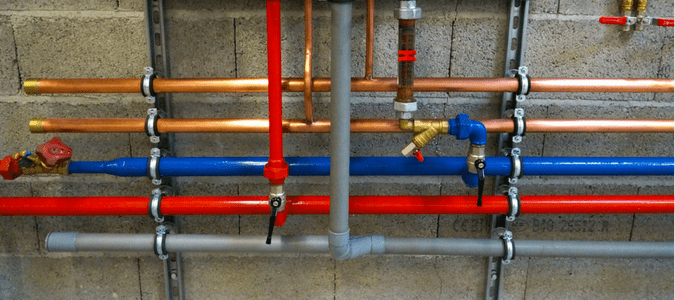
Galvanized Pipe Definition
Galvanization can be accomplished a few different ways. Zinc can either be applied to iron or steel to give the metal a thin layer of protection against corrosion. The process was developed in Europe in the 1830s.
At first, metal was hand dipped into the molten zinc. Over time, other methods were developed, such as electro galvanizing, sherardizing, metallic spraying and painting. Electrogalvanized coatings, also known as electroplating, are applied using an electrical current. Using this technique, the resulting zinc coating is thinner than if the material was dipped, so these pipes can’t be used outside. Sherardising is sometimes also called vapor galvanizing or dry galvanizing. This method is ideal for coating inner surfaces and for smaller parts. Steel parts are sherardized after they are placed inside of a closed, rotating drum with zinc dust and a filler and heated to extreme temperatures. Another way to coat a pipe with zinc is to use certain types of specially-formulated paint.
Other Types of Pipes
Through the years, a variety of materials have been used to create pipes transfer water, including steel, copper, galvanized steel or iron, cast iron, concrete cement or asbestos cement, plastic and lead.
The Romans used lead or clay piping to move water to bathhouses, residences and amphitheaters. As we mentioned earlier, lead continued to be the go-to pipe for plumbing until around the 1930s when galvanized steel gained in popularity.
As early as the 1960s, galvanized pipes started being replaced with copper. Most new homes built in the 1980s used copper for indoor plumbing. Copper is smaller and lighter than galvanized steel pipes, which makes them easier to work with and install. Although copper pipes are long-lasting, older pipes may have a lead solder, which can leak lead into your water. Pin leaks can also be a problem with copper pipes if there are large temperature fluctuations.
PVC plastic pipes are also used in homes because they are easy to install and don’t rust or corrode. Plastic pipes come in a variety of qualities and are most commonly used for drain pipes. The glued joints can deteriorate over time, however, and this kind of material is also prone to cracks and leaks. PEX is an en-vogue plastic pipe and is more expensive than PVC, but has better durability. It’s flexible and easy to install. However, PEX is not suitable or outdoor plumbing, because direct sunlight degrades the components and they can burst in freezing conditions.
Unfortunately, if you are in a home with galvanized plumbing, you may need to budget for repairs or replacement, as these pipes have a limited lifetime.
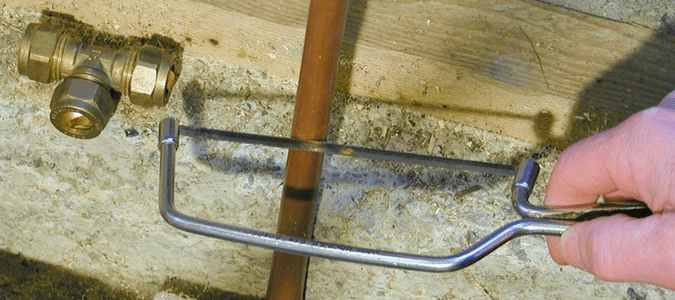
Galvanized Water Pipe Life Expectancy
Even under the best conditions, galvanized plumbing corrodes over time. The typical lifespan of galvanized steel is anywhere from 25 to 40 years. However, in areas where there is hard water, your pipes can fail more quickly. What is tricky about galvanized pipes is that while they appear fine on the outside, they could be corroding on the inside. The deposits along the interior of the pipe build up over time, restricting water flow and decreasing the water pressure in your home. This buildup can also impact water pressure in other parts of the pipe and cause leaks.
Corrosion also can occur at the joints, which can result in a leak. Unfortunately, when those leaks happen behind your walls or under your floors, you may not discover them until after your home has already sustained extensive damage.
There are several problems associated with galvanized pipes: low water pressure, uneven water distribution, water discoloration and leaks.
Low Water Pressure
The corrosion and deposits which form inside the pipes over time decrease the available space inside the pipe, which eventually lowers the water pressure in your home.
Uneven Distribution of Water
Since corrosion often accumulates unevenly, different areas of your home may have different issues with low water pressure. If you aren’t the original homeowner, what may have happened is that some of the galvanized pipes may have been replaced by the previous owner while others were left in place.
Discoloration of Water
If you notice brown stains in your sink or bathtub, you may have iron in your water, which could be caused by galvanized pipes.
Leaks
Over time, as galvanized plumbing eventually fails, the joints leak, which can cause extensive damage to your home. Leaks which occur behind walls or under floors, if left unnoticed, can cause severe damage. In this worst-case scenario, a homeowner might not only need to replace pipes, but also repair any resulting damage from the water leak in the foundation, drywall, flooring, ceilings, wooden support beams and sheetrock. A hidden water leak can even lead to mold damage. Adding insult to injury, leaking pipes are a magnet for termites.
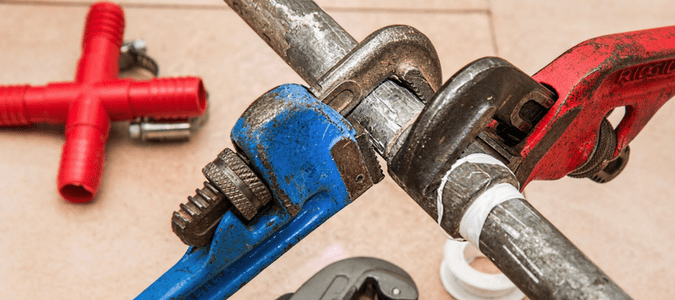
There are things you can look for to determine if you have a leak behind your walls:
- Musty odors.
- Mold orfungus growing on walls or baseboards.
- Off-white, yellowish or brownish stains on a white wall.
- Peeling paint or wallpaper.
- Buckled or warped ceilings, floors or walls.
If you are concerned that you might have a slab leak, inspect your home for:
- Unexplained water which appears on your floor.
- Spongy, distorted or buckling floors, baseboards or wet carpeting.
- Mold and mildew.
- Warm or hot areas on your floor.
- The sound of constantly running water.
- An unusually high water bill.
If you are concerned that you might have a water leak, here’s how to check:
- Turn off all faucets and appliances that use water. Doublecheck to make sure that no water is running.
- Turn off the water to your home (inside and out).
- Check your water meter.
- Record that number.
- Leave the water off for three hours.
- Look at the water meter again.
- If the water has gone up, you have a leak.
If you do have a leak, a professional plumber can help you determine the source of the leak is and make necessary repairs. Even if you don’t have a leak, a licensed plumber can inspect your galvanized pipes to advise you on whether they are to blame for any plumbing issues you may be experiencing.
Do Galvanized Pipes Contain Lead?
A common question that homeowners have about galvanized plumbing is whether or not these pipes contain lead. The answer is that zinc coating typically does contains lead. According to a study published in Environmental Engineering Science, some water samples taken from homes with galvanized steel pipes contained lead at levels greater than the action level set by the United States Environmental Protection Agency. The study found that partial replacement of lead pipes, or galvanized steel, with copper piping, installed upstream can worsen lead release.
Because of the expense and inconvenience of having your home’s pipes replaced, you may be tempted to partially switch out your pipes. However, because of the increase in lead contamination, as well as the other problems this type of plumbing can cause, a complete replacement is recommended.
Changing your entire plumbing system may seem overwhelming. However, when you take into account the damage the pipes can cause if left in place, it’s better to replace them prior to them leaking behind walls or under floors. Even worse, these types of pipes can contaminate your water supply.
ABC Can Replace or Repair Outdated Plumbing
The professionals at ABC Home & Commercial Services can identify which type of plumbing you have, as well as diagnose any other plumbing problems in your home. If you do have galvanized plumbing and your pipes need to be upgraded or replaced, our certified plumbers have extensive experience in making these upgrades. Trust ABC with your plumbing so that you avoid unexpected and expensive surprises later on.
